 At the time of buying new washing machine The buyer is faced with the question of how to install it correctly. A common mistake is installing household appliances close to the wall. The operating rules require that a certain distance be maintained from the wall to the washing machine. How to determine it?
At the time of buying new washing machine The buyer is faced with the question of how to install it correctly. A common mistake is installing household appliances close to the wall. The operating rules require that a certain distance be maintained from the wall to the washing machine. How to determine it?
Reasons why clearance is needed
Almost all models produced today have a hose on the back wall through which water enters the unit. There is also usually a second hose through which the already used water is drained. For the correct functioning of household appliances, it is necessary that these two hoses do not become kinked. Otherwise, the risk of hoses breaking increases, which will lead to water leakage.
Most models are connected to the electrical network using a wire, which is most often also located on the back wall. It is important not to crush this wire, because this can cause it to become damaged or even break. As a result, there will not only be a risk of unit failure, but also the risk of electric shock to family members, as well as the risk of a fire.
Most owners of this household appliance have experienced breakdowns when they during operation it begins to leak. To quickly eliminate the consequences of an accident, it is necessary that the distance between the wall and the washing machine provides free access to the equipment’s communications, that is, to those hoses through which water is supplied to and drained from the unit. Failure to eliminate the accident in a timely manner may lead to the need for repairs in the apartment. Moreover, you can flood the apartment of your neighbors below, with whom you will then have to sort things out, and, perhaps, also pay them compensation for repairs.
When operating household appliances, due to the high rotation speed of the drum, they often vibrate strongly. The strongest vibrations occur when washing items are spinned. If you place the washing machine at a short distance from the wall, the unit will bang against it. Constant impacts can lead to rapid breakdown of household appliances, and we are not only talking about the appearance of the washing machine (the appearance of scratches and microdents). Due to shock loads, its internal mechanisms wear out faster and fail: bearings, drum, spring suspension.
On the other hand, vibrations will be transmitted to the walls. This will not only increase noise from household appliances, but can also lead to the fall and destruction of interior items - vases, paintings, flower pots. If the washing machine is installed in the kitchen, the dishes located there may break.
Correct location of the washing machine
So what should be the gap between the back wall of the household appliance and the wall of the house? Most often, the exact information is indicated in the instructions for a specific model. But he can't be less 5 centimeters, but it is better to provide a ten-centimeter gap. An important criterion is that a person’s hand must fit freely into this gap.
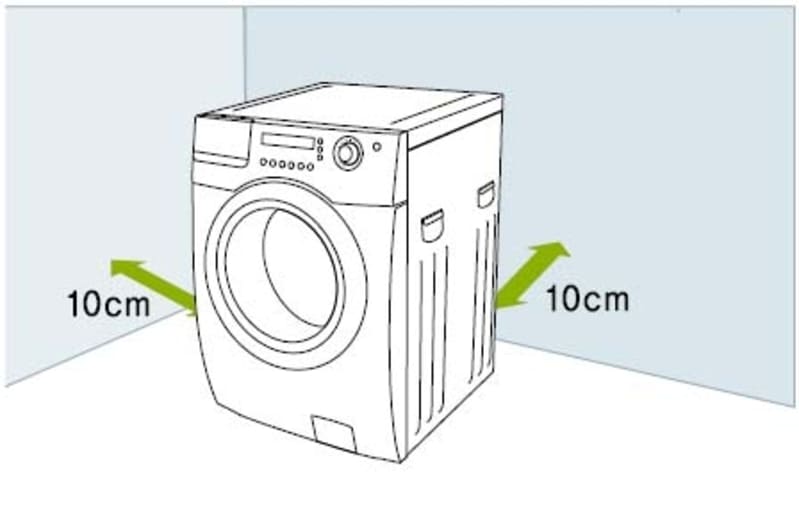
Also, due to vibrations, it is necessary to ensure a certain distance between the side walls of the unit and the walls of the house. This gap depends on the surface on which the household appliances are installed. If the floor is perfectly flat, then one centimeter is enough. Otherwise, it is better to ensure a distance of at least three centimeters.
Very important correctly install the purchased model on a flat surface. Even its slight deflection, which is invisible to the eye, can lead to breakage over time. The fact is that due to the asymmetrical position of the washing machine, there will be an imbalance in the load on the dampers installed in it. As a result, one of them will fail prematurely. This will lead to the fact that the sensors inside the unit will incorrectly determine the mass of clothes loaded into the drum, which is why the housewife will not be able to load it completely - the washing machine will freeze during the spin cycle.
By the way, there are special supports for washing machines that should be used when the floor surface is uneven. An anti-vibration carpet is also suitable to reduce vibrations.
Sometimes, when installing household appliances, either a countertop is placed above it, if it is installed in the kitchen, or a sink, if the unit is installed in the bathroom. In both cases, it is important to prevent direct contact of the purchased model with other surfaces due to the same vibration.
centimeters from the side and front (in the case of a top-loading unit) walls of the machine to other surfaces. 5-10Conclusion 2-3The washing machine must be installed with a gap to avoid problems with vibration, provide easy access to communications and not to pinch the electrical wire and water supply and drain hoses. The recommended distance from the rear wall of the unit to the wall of the house is centimeters, and from the side walls -






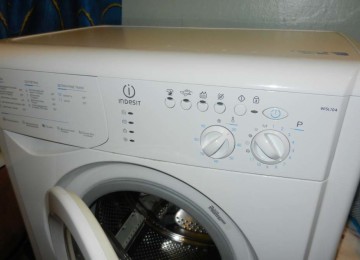
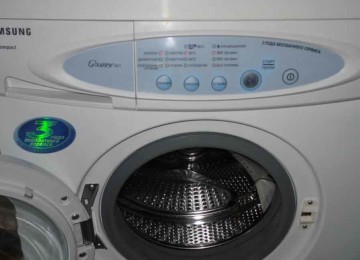
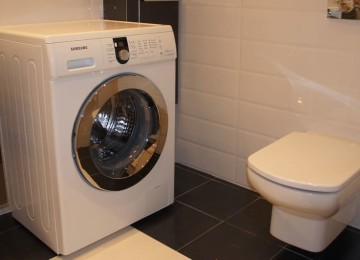
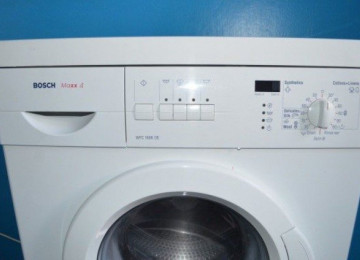
Bosch Maxx 4 operating instructions